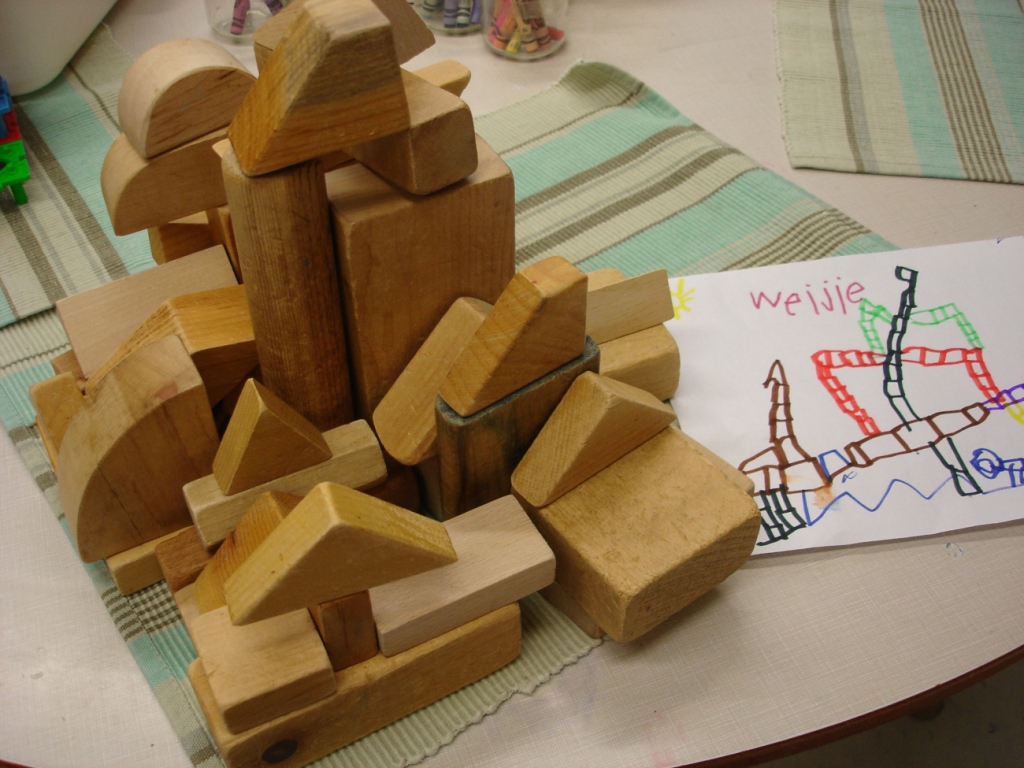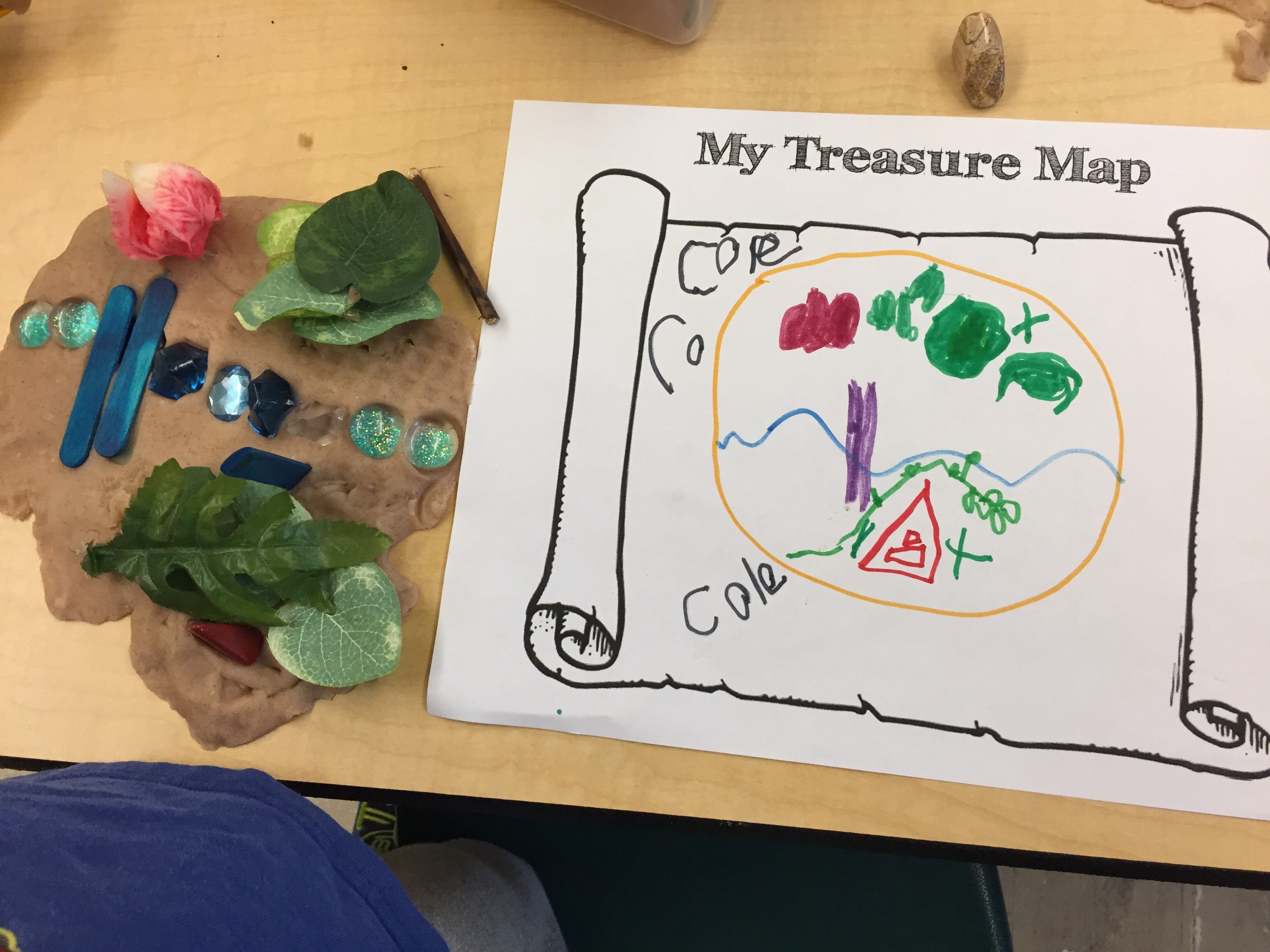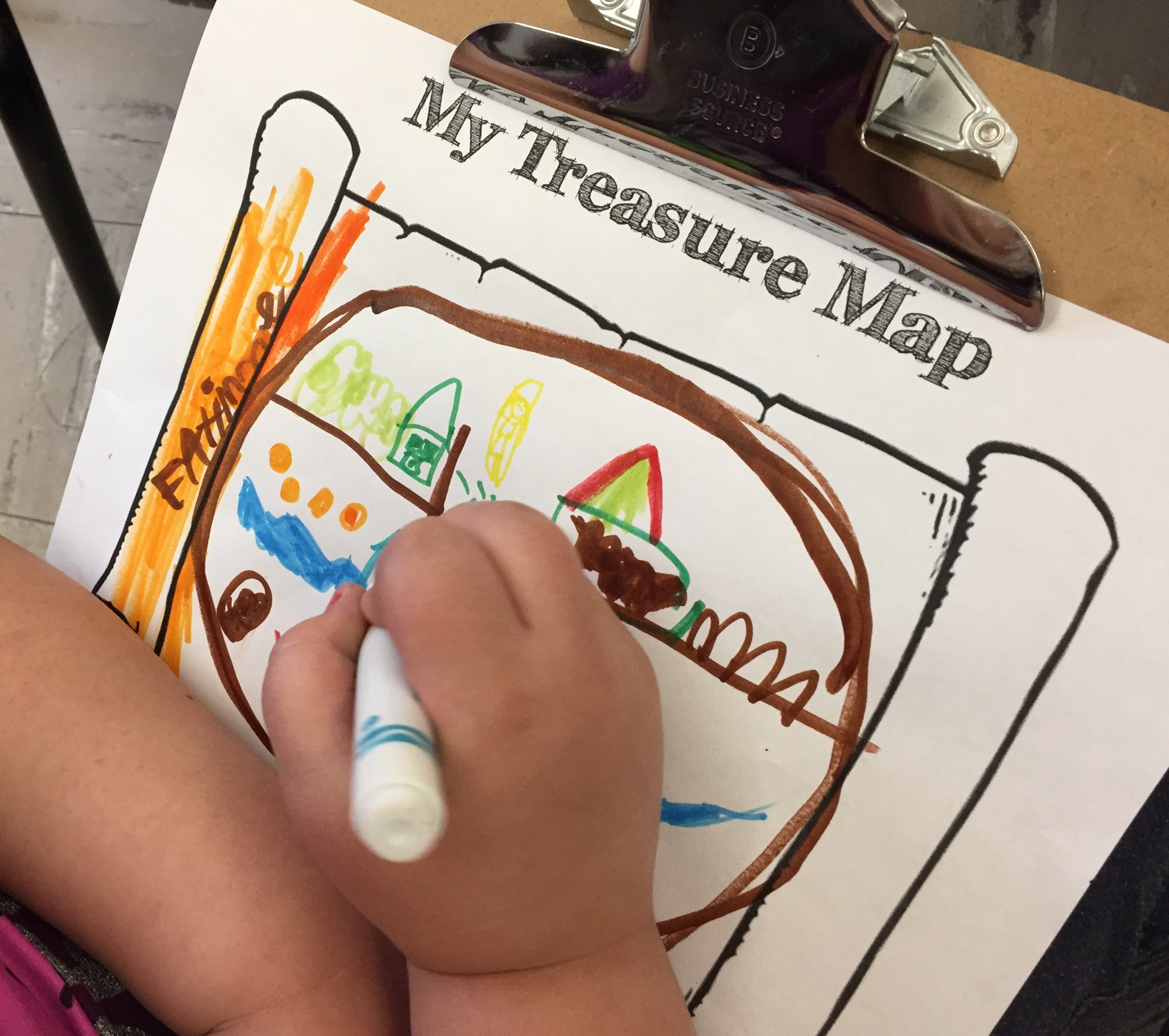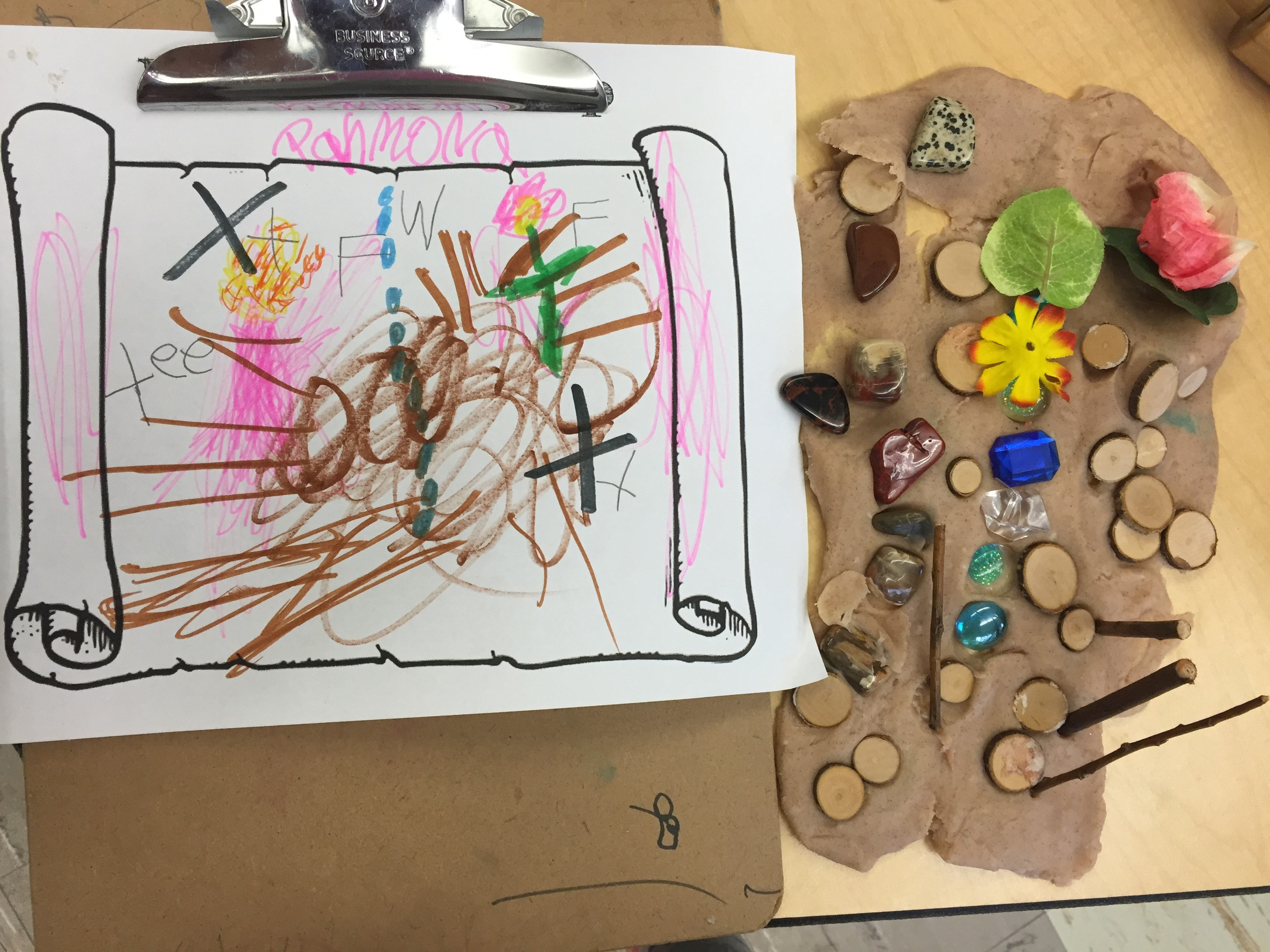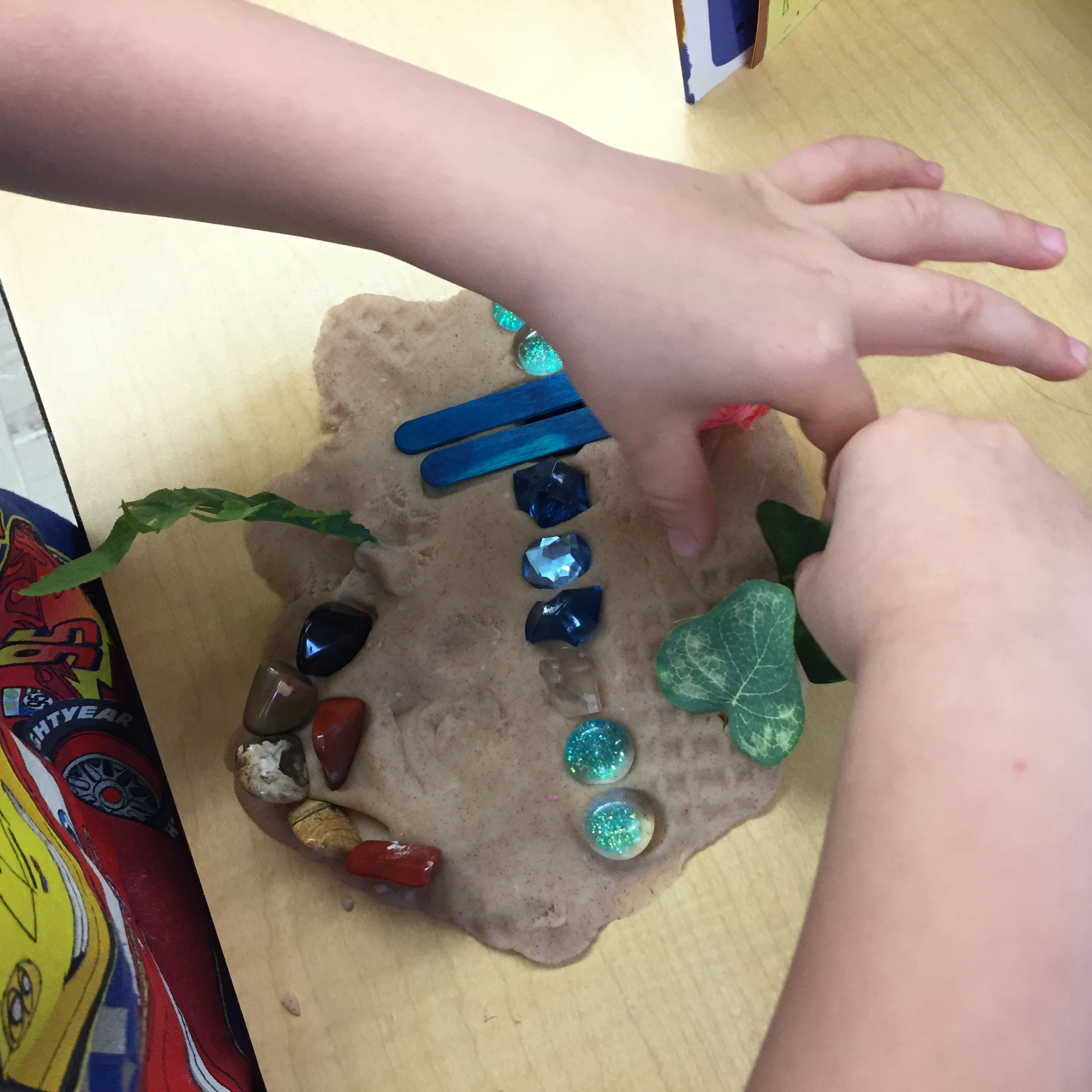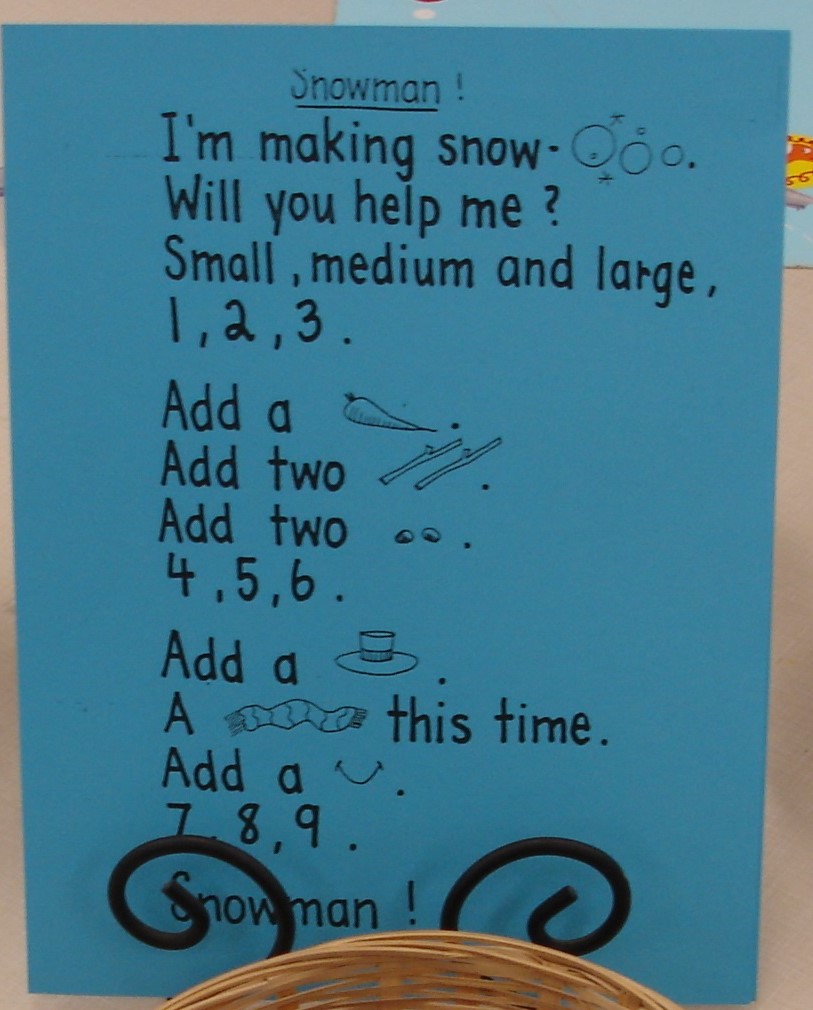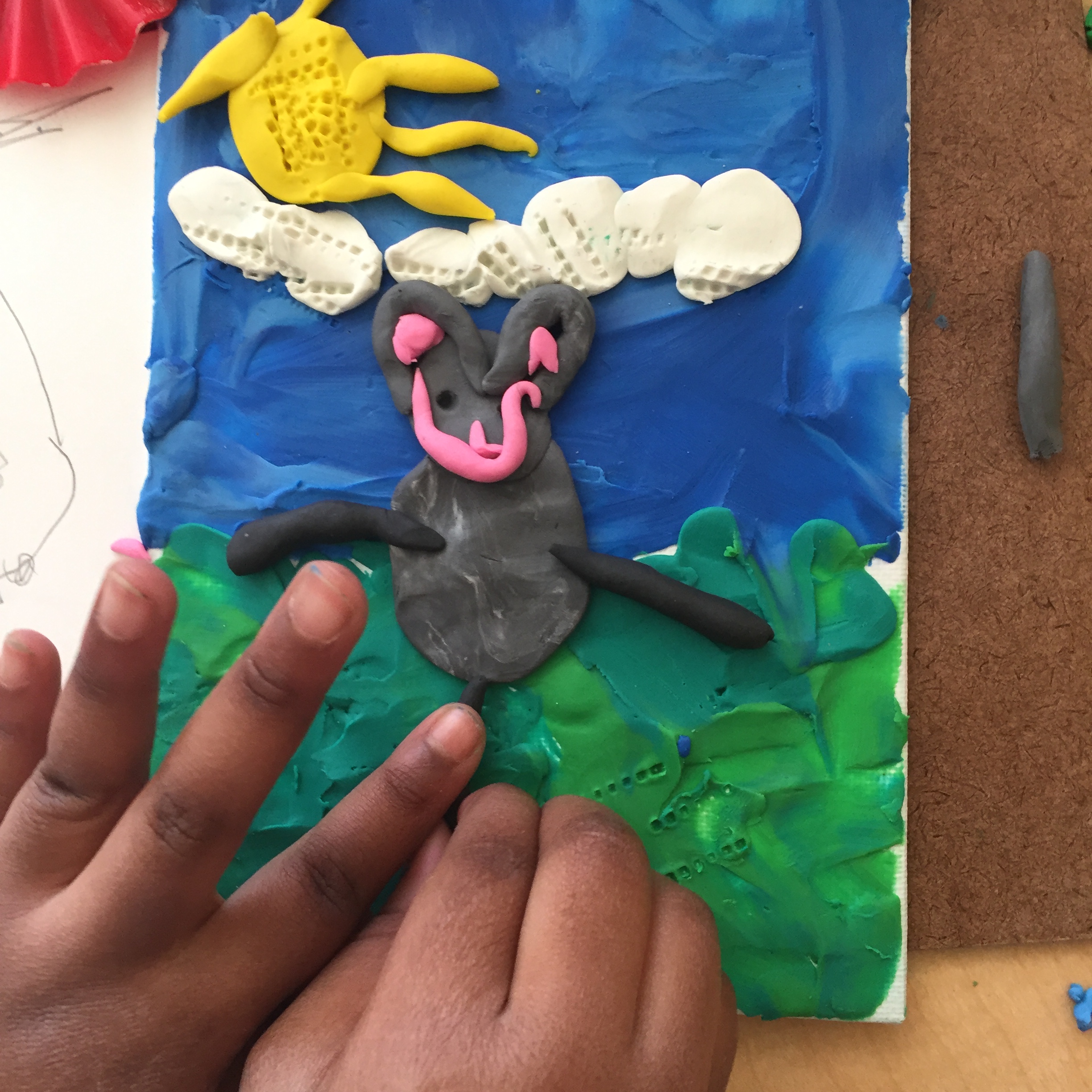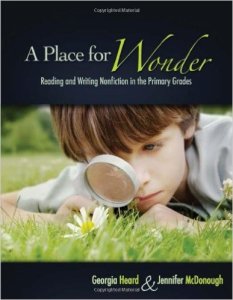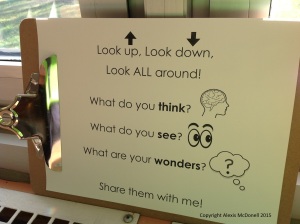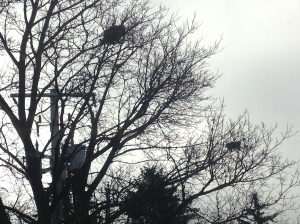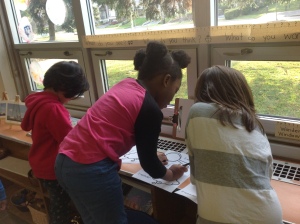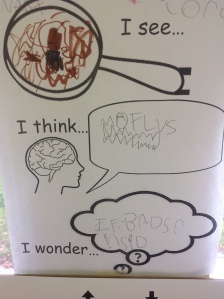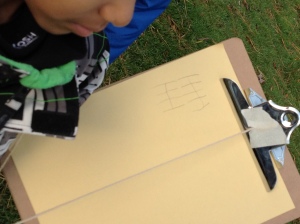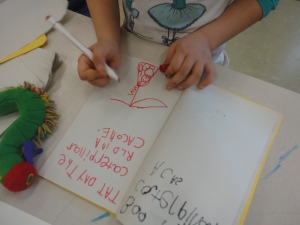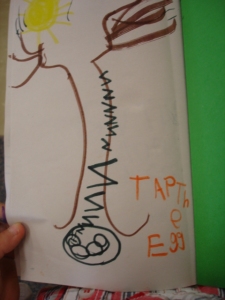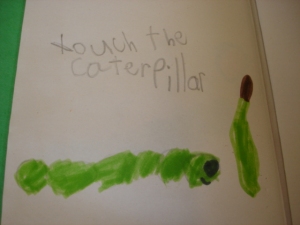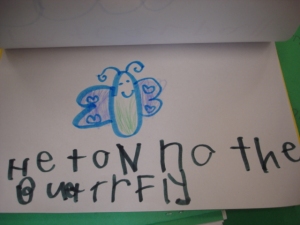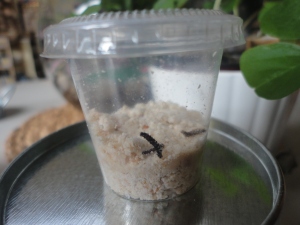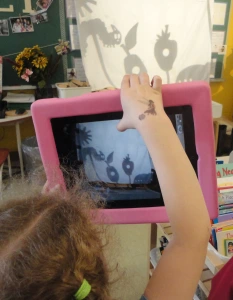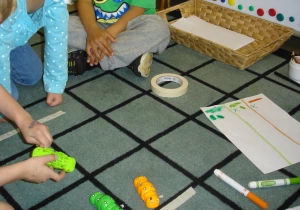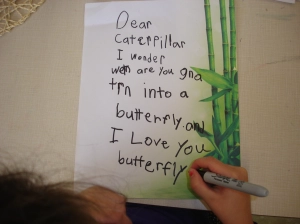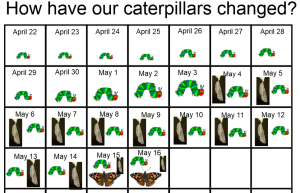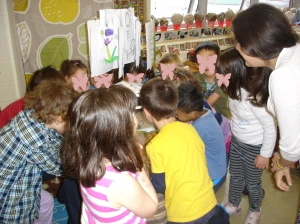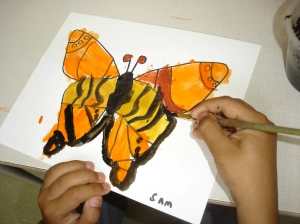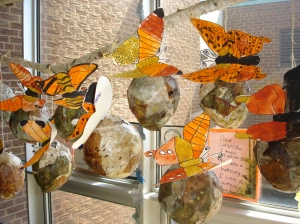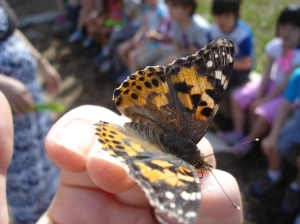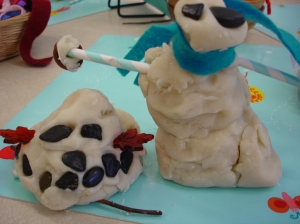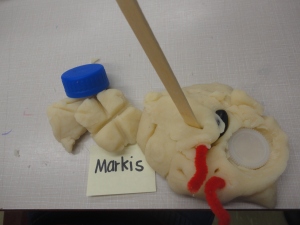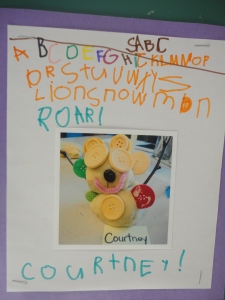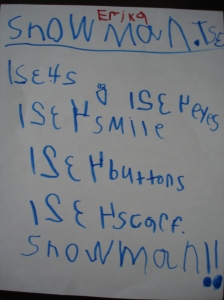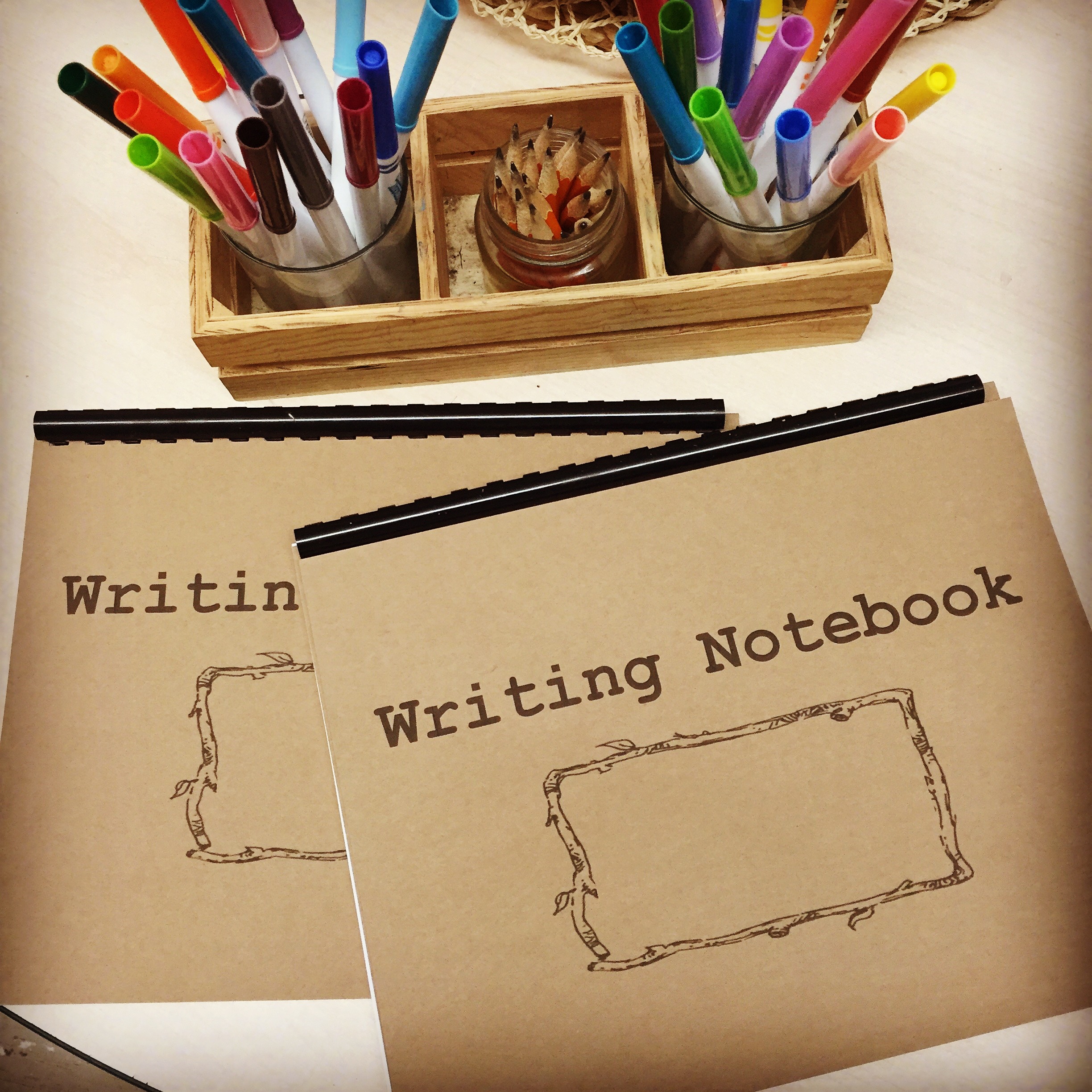
Writer’s Workshop. I’ve been meaning to get to this post for some time. I often have visitors in my classroom, and when I do, Writer’s Workshop is by far the aspect of our program that gets the most interest and generates the most questions. There are MANY ways to run a writing program and mine is but one way to go about incorporating explicit writing instruction into the day. I have modeled my approach after the one created by Lucy Caulkins and modified it over the years to suit my own style and the needs of my students, as well as to include new learning I have gathered from current research and new publications.
So to start, here are the resources I recommend for learning about how to begin a Writer’s Workshop in your classroom: What’s Next for This Beginning Writer? by Janine Reid, Betty Shcultze, and Ursula Peterson:

And, Launching the Writer’s Workshop (from: Units of Study for a Yearlong Curriculum) by Lucy Caulkins (*all of the books in the Units of Study collection are wonderful). When I first began implementing Writer’s Workshop many years ago, Lucy’s book “Launching the Writer’s Workshop” would sit perched on my lap during every lesson. In the beginning, I read her mini lessons out loud verbatim until I was able to find my own voice and comfort level for teaching. They were wonderful models, easy to implement, and engaging for my students. If you aren’t sure where to begin, I recommend starting with this book.

Preparations for Writer’s Workshop begin even before the first day of school. I start by finding the special place in our schedule where Writer’s Workshop will take place. Although it doesn’t have to be at the same time each day, I find that having it occur as a regular and predictable part of our routine is helpful to my students. We do Writer’s Workshop after lunch about 3 or 4 days per week. The children are used to this routine, and are prepared and excited for writing each afternoon as they return from lunch. Many children are prepared as soon as they arrive in the morning, telling me exactly what they plan on writing about later in the day!
The other way I prepare for our writing time is by constructing our writing notebooks. You can purchase books from your school supplier, but I have found the quality of what is offered to be sorely lacking. The books are often too small, the paper too thin, and the number of pages fixed. I make my books using 8 x 11.5 inch paper with a cardstock cover and backing which I bind together using our school’s binding machine. I calculate how many pages I will need from September – December (we will use another system after the holidays – more about that later!) and voila! Our special notebooks are ready for the children’s wonderful ideas! You can download a pdf copy of the cover page I have created here: writing-notebook

At the beginning of the school year, the goal for our Writer’s Workshop lessons is for the children to learn what is expected during writing time: what they are expected to do, what materials they are expected to use, what they do when they’re finished, where to put their materials, etc. Every Writer’s Workshop involves a mini lesson, writing time, and reflection. In our class, the reflection or sharing time always happens at the end of the day. I save a few pieces of work to share later so that the children can get on with discovery time as soon as they are finished their work. This is how we set it up: The classroom tables are cleared of their provocations (which are put aside on adjacent shelves) and the children’s notebooks are placed on the table along with the writing materials they will need to create with (pencils, markers, crayons, etc.). Pro tip: I date stamp each child’s page for the day and add a picture stamp (a smiley face, a heart, a sun, etc.) on the page the children will be writing on. This helps the children flip to the correct page for writing and focuses them on just that one page for the day (so the children don’t flip through and write or scribble on every page…which some children will do, out of pure excitement of course!). As the children finish their work, they bring it to a teacher to share what they have done and then put it away in the bin on the writing shelf and immediately choose a centre for discovery time. As the tables empty of writers, we re-set up the provocations for discovery time. I find that doing it this way allows for greater flexibility and flow in the classroom, i.e., the children don’t have to wait for the whole class to finish their work before getting on with their other learning centres, and those that finish early are able to get themselves engaged in other learning without the assistance of a teacher.
The mini lesson is extremely important. When I do a mini lesson I am explicitly modelling the writing behaviours I want to see my students exhibit. I draw my own picture each time, modelling with a think-aloud everything I think about and consider while writing. Where was I? What was I doing? Who was with me? What was the weather like? etc. I model how I choose colours. I model how I add details. I model how I draw myself. After I draw, I model how I can label the details in my picture. Over time, this is something I ask the children explicitly: “Can anyone tell me something in my picture I can label? ‘Me’? Great! How do I spell ‘me’? M-E. Wonderful!” We usually label using initial consonants at first, or names like “mom” and “dad.” Then I will write my sentence. At the beginning of the year I do this quickly. Over time, the children help me with this as well. We share the pen in an interactive-writing way. The children sometimes help me generate a sentence based on the picture I’ve drawn. This is where I teach the children about sounding out words, using finger spaces, directionality and punctuation. It all happens rather quickly, given that the mini lesson is only 10 minutes or so. But the practice we get doing this almost daily sinks in and I will see my students begin to use these strategies on their own during writing time.
Writing time immediately follows the mini lesson. All the children find their writing notebooks and get to work on their pictures. The teachers circulate and talk to the children about what they are writing about. Sometimes children need help thinking of a topic, but after a few weeks of Writer’s Workshop most children do this independently. I should make clear that writing time is not a quiet working time. It is loud. It is lively. The children are engrossed in their work and love telling the classmates at their table what they’re writing about. They help each other spell things. They share markers. They give advice or feedback to each other.

When the children finish their work they bring it to a teacher. This is when our mini “conferences” happen. I ask the children to tell me about what they have written and take note of the story they are telling. I do not scribe the child’s sentence on their work, but rather on a sticky note which I stick to the back of their work (for my own reference later). I learned this from What’s Next for This Beginning Writer. The thinking is that the children lose ownership over their work once the teacher takes control of writing their thinking for them. Although skeptical at first, I found the children were more likely to begin to write their stories themselves once I stopped scribing for them.
The feedback each child receives depends on what each child is working on currently. At the beginning of the year I focus heavily on picture making as a way of story telling. We work on choosing a good topic (I emphasize modelling events from my own life – from grocery shopping, to going out with my kids, to drinking coffee and reading books, etc.) and I encourage the children to draw themselves in their pictures. I want the children to write about authentic experiences so that they can simultaneously work on their oral language skills when talking about what they have seen/done. The children always have more to say about things they have actually experienced first hand rather than just things they enjoy (e.g., rainbows or monster trucks – though we often get a lot of those kinds of pictures too in the beginning which is ok. There is also a difference between a child writing about something they are inherently passionate about and something they just think is cool or pretty. I have students who’ve written many interesting stories about Minecraft for example.).
During writing time, I am busy looking for breakthroughs or roadblocks. I’m also looking for work to share during reflection time. Usually, it is work that reflects a concept I was teaching in my mini lesson. However, we also love sharing breakthroughs or personal bests, so if a child has suddenly started labeling or writing their own sentences we will share that new learning with the class.
After the winter break, I switch from using writing notebooks to using writing folders. These are two pocket folders that the children use to store their work. Instead of a notebook, the children use single sheets of paper to write on (I use the ones suggested by Lucy Caulkins). The paper reflects the needs of the students. Some children continue working on a blank sheet. Other children use a paper with space for a picture and one or two lines underneath for sentence writing. Still others use paper with space for a picture with lines underneath and lines on the back of the page as well. Again, the work is date stamped. At any time a child can use paper with lines if they need it. I mostly let the children self-regulate this step, but will also suggest it when I feel a student is ready. At the end of each month, the children choose their best work and that work is showcased on our Writer’s Wall. Before choosing their best work we spend time talking about what “Best Work” might look like and we co-construct success criteria together. I love meeting with each child to discuss the progress they’ve made over the month. It’s amazing how reflective the children become over time about their own learning and development as writers. Some children have a hard time choosing what their best work is and will invite their classmates to help them choose (last year one girl even took a survey of her classmates to help her pick!). Once the child has chosen their best work the rest of the work from the month gets stapled together with a cover page with the month on it. The children enjoy re-reading their “books”during writing or discovery time.

Some children like to lay out all their work and narrow it down through a process of elimination.

This student said, “It’s so hard to choose my best work because I always do my best!”
One thing I want to make clear is that Writer’s Workshop is for everyone. One of the reasons I dedicate so much time to it during the week is that for me, it is a high yield strategy. It is our reading and writing and oral language development all rolled into one. Whether or not a child can speak English or hold a pencil or draw figures or know their alphabet, they can all participate in Writer’s Workshop. The teaching, the individual attention, the flexible format of our writing materials meet our students where they’re at. If you are at all hesitant to give this a try, my advice would be just to go for it! Believe me, there are times in the first couple of weeks of school where I don’t see a whole lot of progress that I have to remind myself just to keep at it…keep encouraging, keep supporting, keep modelling..and always the payoff comes.

The other thing I want to make clear is that our writing program is not limited to our Writer’s Workshop time. Most (if not all) our provocations encourage the children to draw or write about their learning. We use writing for routine tasks (like our daily message or calendar-journal, our sign-in, etc.), at learning centres, for special projects, at the writing centre, and during workshop time. Writing is encouraged always and everywhere in our classroom!
If you have any questions about our version of Writer’s Workshop please don’t hesitate to leave a comment below.


